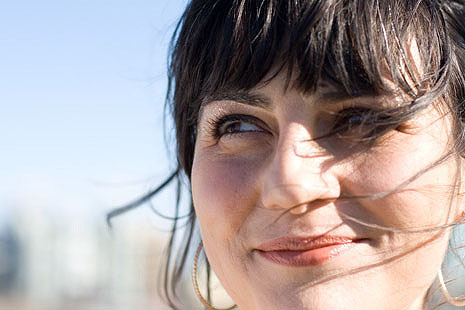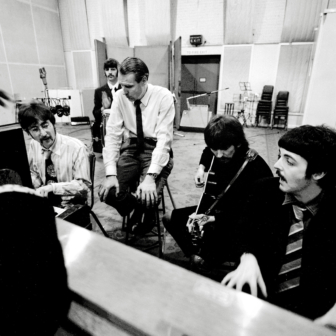I DON’T get out as much as I might. I live in the country with a toddler and even getting to my own concerts is sometimes tricky. In particular, Melbourne is a long way away. These are among my excuses for not really knowing who Monique diMattina was or what she actually did.
My experience of diMattina was based entirely on her album Sun Signs, which appeared in late 2011. Having never heard of her, I assumed this was her first CD. And I really liked it. Sun Signs was, for the most part, an album of thoughtful, gentle, delicate solo piano music, composed and played by diMattina. It was on the JazzHead label and clearly some of it was jazz, but the music was anything but obvious. If I tell you that on the first track, “Sun,” the pianist edges closer and closer to the “Nimrod” theme from Elgar’s Enigma Variations before finally coming right out and quoting it, you will begin to see what I mean. Elgar and jazz piano are not natural bedfellows.
So I played the CD on the radio, I gave it as a present to friends, and finally I lent my copy to someone whose identity now eludes me (if you’re reading this and you are that person, you know what to do). The point is, I was a fan. But of what, exactly? And of whom?
When, a few weeks ago, a new album by diMattina appeared, I leapt upon it. Into the CD player it went and, blow me down, she was singing. Quite well. With a band. In New Orleans. How wonderful, I thought – still clinging to my belief that diMattina was some wistful wood nymph of refined jazz sensibility – she’s gone and released a breakout album!
But the truth – and please refer to paragraph one again before you condemn me – is that Sun Signs was not diMattina’s first album. It was not even her third. It was her seventh. And it, rather than this delightful stomp through New Orleans jazz, was more like her breakout moment. She does not generally muck about with Elgar. In fact she has long been a singer, and a songwriter to boot, as listeners to Melbourne’s community radio station 3RRR know well.
Her regular slot on 3RRR is called “Shaken Not Rehearsed” and during it listeners will phone in with ideas for songs. DiMattina takes away the most likely idea and, within the hour, turns it into a new song, which she then performs on air. The songs are generally inspired by events, large and small, in the listeners’ own lives, and so the topics will range from complaints about work (in fact, trench digging) getting in the way of sex, to a broken love affair, to a child’s fantasy about a cat terrorising her neighbourhood. These are all real examples, respectively entitled “Dig a Hole,” “No More Coffee” and “Black Cat,” and as it happens they are all on the new album.
It’s called Nola’s Ark (for those of you who don’t watch Treme, NOLA is New Orleans, Louisiana), and most of the songs are diMattina originals, the bulk of them products of her 3RRR slot. That’s some journey, when you think of it: from a listener’s phone call with an idea for a song, to a studio in New Orleans with some of that city’s top session musicians. In microcosm, indeed, it seems to sum up the very business of creativity. You can start with anything. No idea is too small, even the most unpromising of them can generate a spark and a spark is all you need to begin. Art is not about ideas, it is about what you do with them, how you transform them. In this case, the transformation includes the trumpet of Leroy Jones, who normally works with such luminaries as Harry Connick Jr and Dr John.
So what of diMattina? Well she’s no wood nymph! Her piano playing is bold and inventive, occasionally boisterous, showing the influence of all manner of New Orleans players. I hear, for example, touches of both Tuts Washington and Huey “Piano” Smith. Her singing voice, meanwhile, is pitched somewhere between Billie Holiday and Rickie Lee Jones, though her phrasing and a certain wryness in the delivery regularly remind me of Blossom Dearie.
But the most impressive thing about diMattina – and remember, I will always hear her work filtered through my initial exposure to Sun Signs – is her range. As I’ve commented before in Inside Story, Australia has an extraordinary oversupply of talent in jazz, particularly among piano players. Still, I can’t think of anyone else who would move quite as cheerfully between the styles of music to be found on these two CDs by Monique diMattina. •




